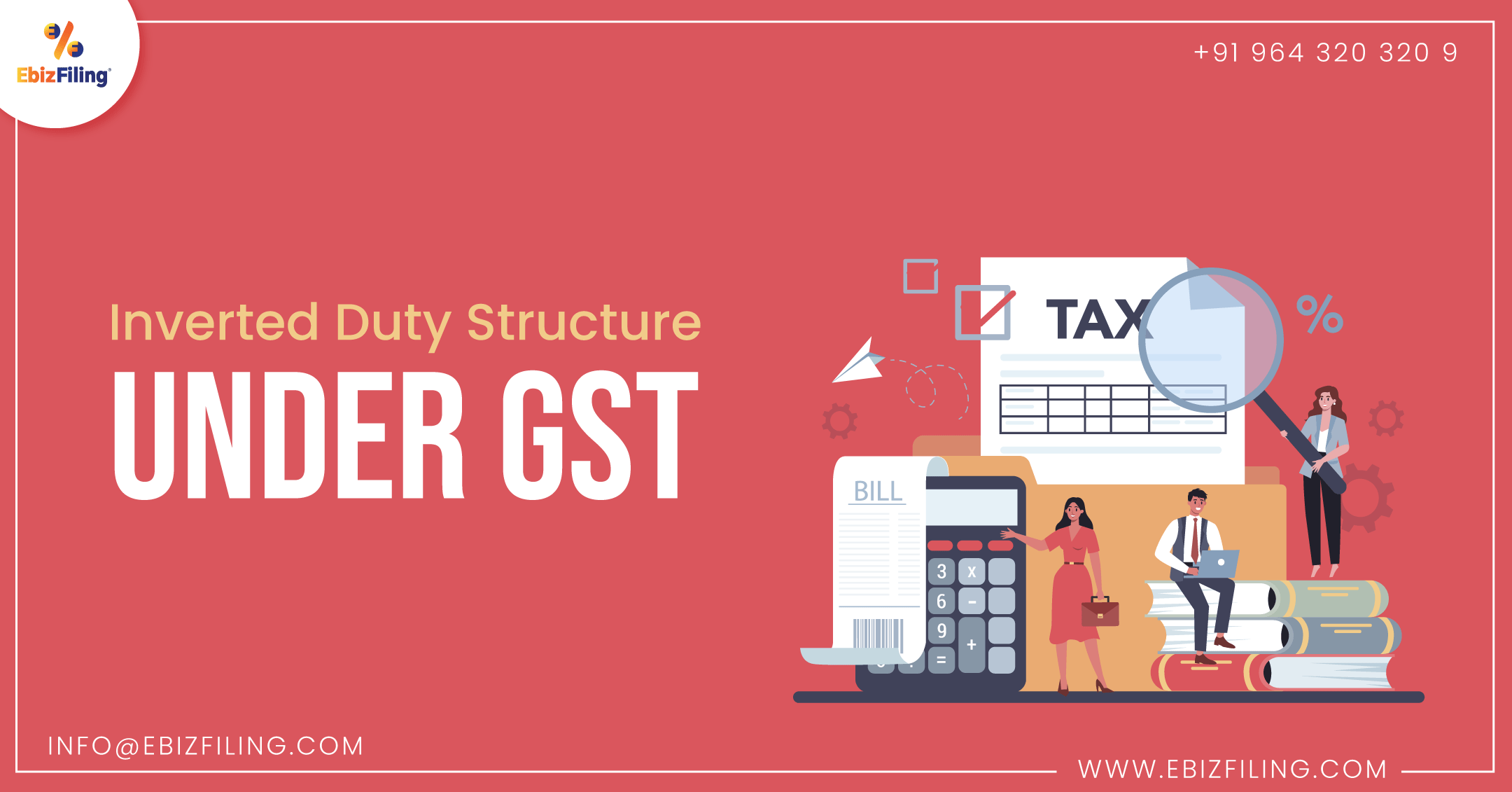
-
April 28, 2022
“What is Inverted Duty Structure?” And information on Refund under GST Inverted Duty Structure
Introduction
When the GST system was established in 2017, it aimed to rationalize the ‘inverted duty structure in GST’ by allowing refunds of utilized ITCs (Input Tax Credits) and enabled refunds of credits for both goods and services. This means that a GST (Goods and Service) taxpayer can claim the Inverted Tax ITC whenever the tax has accumulated as a result of the Inverted Duty Structure. In this article information on “What is Inverted Duty Structure?” And refund under GST Inverted Duty Structure information is mentioned.
What is Inverted Duty Structure?
When import tariffs on input products are greater than on completed goods, an inverted duty structure emerges. In other words when the GST rate on purchases is higher than the GST rate on sales at that time Invert Duty Structure comes into the picture. Inverted Duty Structure is also termed Inverted Tax Structure.
Information on GST Refund Inverted Duty Structure
Unused Input Tax Credit (ITC) may be refunded to a registered individual. The ITC for inverted tax structures can be claimed at the conclusion of any tax period in which the credit has accrued as a result of the input tax rate being higher than the output tax rate. A tax period is a period for which a return must be filed.
The following are examples of situations when a refund of an un-utilized input tax credit cannot be claimed:
-
If items exported from India are subject to export tariffs.
-
Except for the supply of goods or services or both that may be notified by the government based on the GST Council’s recommendations, output supplies are nil rated or entirely exempt.
-
If a supplier requests a refund of IGST-paid output tax.
-
If the supplier receives a duty drawback or IGST refund on these supplies.
Inverted Tax Structure in the Pre-GST (Goods and Service Tax)
Prior to the GST (Goods and Service Tax), there was an inverted duty structure in place where the import duty on raw materials used in the manufacture of completed items was higher than the import duty on finished goods themselves.
|
Finished Goods |
Inverted Duty on Finished Goods |
Raw Materials |
Inverted Duty on Raw Materials |
|
Electrical Transformer |
7.50% |
Micro-organism |
30% |
|
Solar Modules |
Nil |
Components for Solar Modules |
5-10% |
|
Dehydrates Culture Media |
10% |
Components |
18-28% |
|
Seaweed |
10% |
Agar |
30% |
|
Railway Locomotives |
5% |
Steel Tubes |
10% |
What is Inverted Tax Structure in Post-GST (Goods and Service Tax)?
Where the credit has been collected as a result of the rate of duty on inputs being higher than the rate of assessment on yield supplies, other than nil appraised or completely excluded supplies, with the exception of labour and product provisions, or both, as the Government may be informed on the Council’s proposals.
The formula for Calculating refund under Inverted Tax Structure:
(Adjusted total turnover X Net input tax credit / Turnover of inverted rated supply of goods and services) – Tax owed on such inverted rated supply of goods and services, is the formula for calculating refund under Inverted Tax Structure.
The process to claim a refund under GST Inverted Duty Structure
The Prerequisites: To obtain a refund due to the inverted tax/duty structure, the following GST criteria must be met.
-
The registered taxpayer must submit GSTR-1, 3B for the relevant or particular period.
-
There should be an ITC balance.
-
The required form to be completed is: The RFD 01 is the appropriate form for filing a refund claim, and it is also available online.
Filing Time Limitation: For the financial year in which the claim arises, the refund claim in RFD-01 must be filed within two years of the end of the relevant inverted duty period’s FY (Financial Year).
Below is the process on refund on account of ITC (Input Tax Credit) accumulated due to Inverted Tax Structure:
-
Fill out RFD-01 and submit it to the GST Portal. The GST Portal will create an ARN (Application Reference Number).
-
From the portal, print the completed application as well as the created Refund application ARN Receipt.
-
Submit the printed documents to the appropriate jurisdictional authorities, together with any necessary supporting evidence.
-
A tax officer will process the refund application. Once the application has been processed, a refund will be issued manually.
-
Contact the applicable state/Nodal center’s officer if the state/jurisdictional center’s authority has not yet been assigned.
Conclusion
The GST Law gives zero-rated providers a variety of methods for claiming refunds of taxes paid on the input side. One possibility is to export under a bond or LUT and claim a refund of the ITC that was not used. Subject to specific conditions, the law also allows for the reimbursement of unused ITC when credit is accumulated as a result of an inverted duty structure. Refund requests must be processed within a certain amount of time, and claims that are not resolved within 60 days will be subject to a 6% interest charge. Furthermore, 90% of the claim would be reimbursed on a temporary basis within 7 days of receipt of the claim. Claims must be submitted with the bare minimum of evidence, and the reimbursement will be credited to the claimant’s bank account.
GST Return Filing
File error-free GST Return and in-time. Get your GST return filings done through experts ebizfiling.com.
About Ebizfiling -










Reviews
Akshay Sharma
18 Apr 2022I took a TM service for my Tea Brand, wonderful service with humble staff, and provided solutions on time. Recommended for all
Mamta Tanna
20 Dec 2017More power to the Ebizfiling team for being so generous and systematic in the whole process of ESIC registration.
Priyanka
19 Mar 2019Great work by ebiz team. Very supportive. Highly recommended.
January 1, 2026 By Dhruvi
Skills GST practitioners should upgrade to in 2026 To begin, For a long time, being good with GST meant knowing returns, rates, and deadlines. If filings were accurate and timely, clients were satisfied. That definition is changing. In […]
January 1, 2026 By Dhruvi
Best compliance add-ons for GST practitioners this Year It Usually Starts When GST Work Becomes Too Much to Handle Alone Most GST practitioners start their practice with a clear focus. File returns correctly. Meet deadlines. Handle notices when they come. […]
December 26, 2025 By Dhruvi
How Bookkeepers can add value with GST & ROC basics? To start with, Bookkeeping today is no longer limited to recording transactions and closing books. Business owners expect more clarity, more support, and fewer surprises. This is where GST & […]